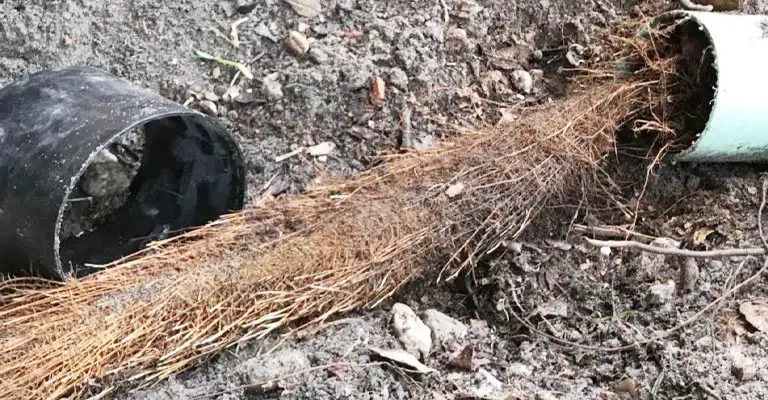Discovering tree roots in your sewer line can be a homeowner’s nightmare.
As silent invaders, these robust roots can infiltrate and wreak havoc on your underground plumbing system, causing a range of troublesome symptoms that could escalate into costly repairs if left unaddressed.
In the most unlikely places, they can grow through concrete, pavement, underneath foundations, and perhaps most dangerously, into sewer drains.
Any tree root that grows in a sewer line can quickly expand, causing the entire drainage system to stop working.
The right way to deal with tree roots in sewer lines can prevent this problem from occurring.
What Causes Tree Roots in a Sewer Line?
As trees grow toward moisture, their roots attract water for absorbing and transporting nutrients.
I actually find them quite amazing. It is possible for a sewer line to leak through a small crack or to have a misaligned joint, so small cracks have the potential to attract all the tree roots nearby.
Roots of trees find as much moisture as they need within drain pipes as they work their way into them. Once the roots begin to expand and multiply, the pipe will eventually be cracked wide open and any drainage will be blocked off.
How Do I Know If I Have Tree Roots In My Sewer Line?
It’s important for you to be aware of the signs that may cause tree roots to get into your plumbing, and knowing what to look for will help you catch the problem early on.
Here are a few common warning signs that you might have tree roots in your sewer line.
1. Despite Using Drain Cleaner, Toilets And Showers Gurgle
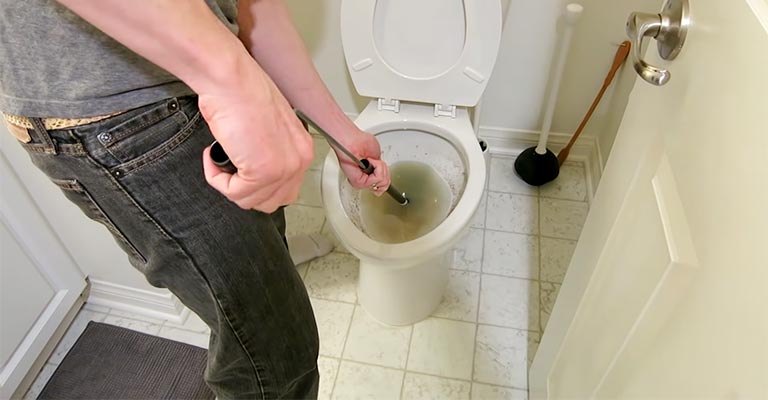
One of the most common symptoms of tree roots infiltrating your sewer line is the persistent gurgling sound emanating from your toilets and shower drains, especially after using drain cleaners.
This occurrence is a clear indication that something is obstructing the smooth flow of wastewater within your plumbing system. Here’s why this happens:
Tree roots are naturally drawn to moisture, and they can penetrate small openings or cracks in your sewer pipes in search of water and nutrients.
Once inside, they continue to grow, gradually blocking the pipe’s interior space. As wastewater flows through the affected area, it encounters these root masses, causing disruptions in the flow.
Gurgling sounds occur when air becomes trapped in the plumbing system due to the root blockage. As water tries to force its way through the clogged section, it displaces the trapped air, creating the distinct gurgling noise.
Despite using drain cleaners to clear minor clogs or obstructions, the underlying issue of tree roots in the sewer line persists, necessitating professional intervention to remove the roots and repair the damaged pipe.
2. Roots Breaking Pipes In The Yard Cause Wet, Soggy Spots In The Yard
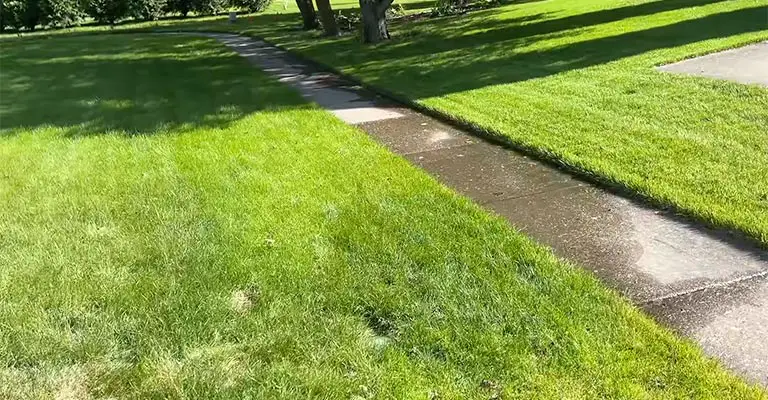
Another significant symptom of tree roots infiltrating your sewer line is the emergence of wet, soggy spots in your yard, which are often localized around the affected area of the underground pipes. Here’s why this occurs:
As tree roots grow, they exert tremendous pressure on the surrounding soil and any pipes they encounter. In their relentless search for water, roots can wrap around and eventually crack or break sewer pipes.
Once the pipes are compromised, wastewater begins to leak into the surrounding soil. This constant influx of moisture can saturate the ground, creating visible wet and soggy patches on the surface of your yard.
These wet areas may be particularly evident during dry periods or in seasons when the trees are actively seeking water, as the roots intensify their efforts to breach the damaged pipes.
The presence of soggy spots not only indicates a problem with your sewer line but also highlights the urgency of addressing it to prevent further damage to your plumbing system and the landscape.
3. Sewer Smells Around The Property
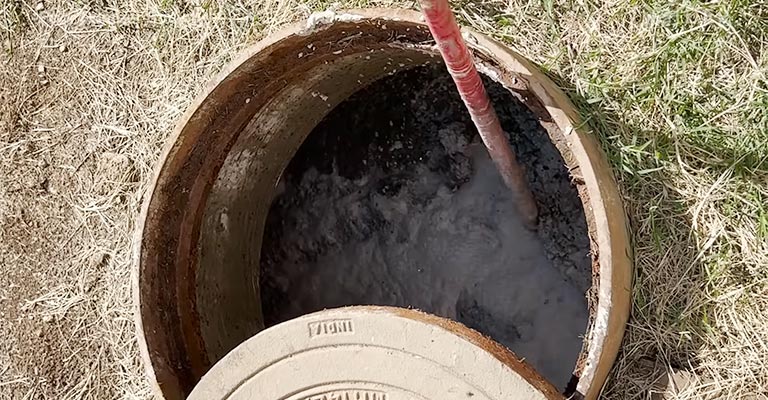
Getting tree roots into your pipes can harm your sewer lines, which can also cause unpleasant odors inside your home and outside.
Therefore, if you detect bad odors or what seems like rotten eggs, you could be suffering from some serious blockage.
4. Blocked And Collapsed Pipes
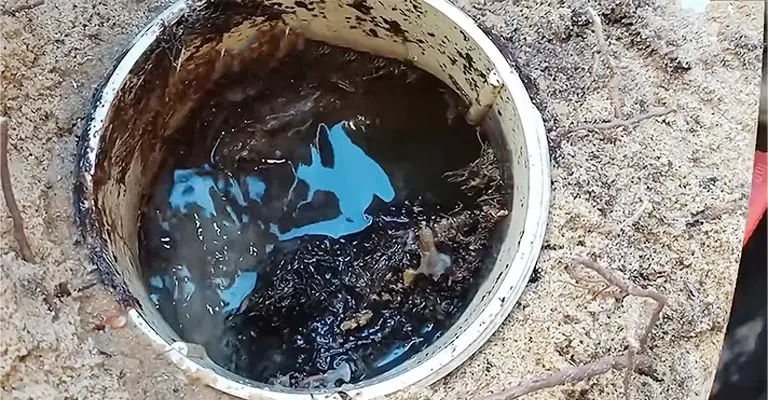
The inconvenience of a toilet backup is well known to anyone who has experienced one. You may be in an even worse situation if you discover that tree roots cause the backup or blockage.
One of the primary causes of clogged pipes is root obstruction, which will need to be addressed by a professional.
5. Having Slow Drains And Backups
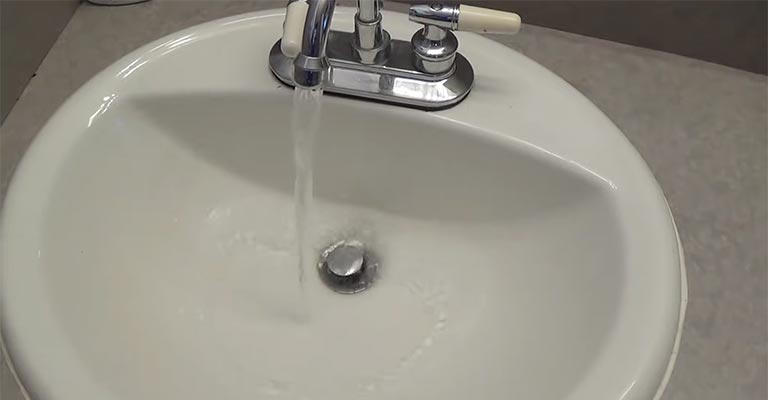
It is usually the main sign of root damage when drains are slow to flow through.
Whenever your toilet drains slowly or makes any kind of gurgling noise, there is a good chance that roots have burst through the pipe.
You should be aware that this risk is particularly high for those who live in older homes or live on properties with large trees nearby.
6. Dripping Water Sinkholes That Undermine Turf
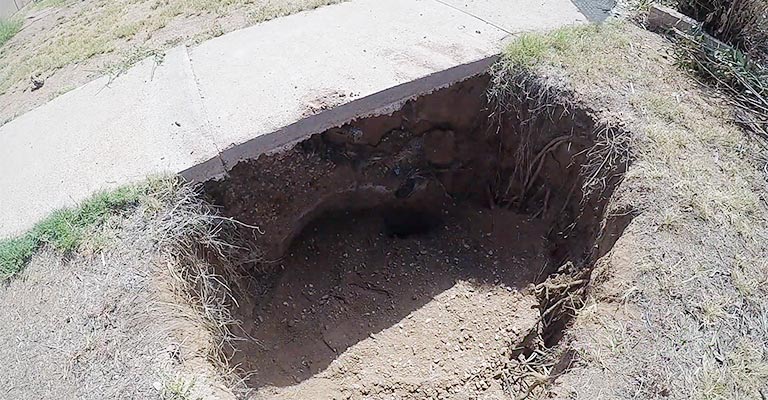
Despite sinkholes being common in some parts of the country, tree roots can also damage pipes, resulting in sinkholes as well.
Be sure to stay away from your lawn if you see sinkholes forming and hire a contractor to fix them right away.
The foundation might be in danger if the problem has progressed to the sinkhole stage, so be cautious as you traverse the property.
Ways to Remove Tree Roots in a Sewer Line
You need to take action if tree roots are found in your sewer line. If you wait too long, you may end up with more damage and a higher price tag, not to mention completely clogged drains and a general mess.
Listed below are four methods for removing tree roots from sewer lines.
1. Use A Foaming Root Killer
Tree roots can be killed with products specifically formulated for the purpose. Using these products will not harm the tree if they are used properly since they only attack the roots within the pipe.
In the event that a chemical kills the roots, it foams upon contact with water and heads down the pipe for killing and dissolving them.
Here are some tips on using foaming root killers:
- The prescribed amount of product should be poured into the toilet.
- The foam should be flushed immediately to force it into the pipe (some products may require multiple flushes).
- After flushing the sewer line, allow it to sit for 10 to 12 hours without further flushing.
- For up to five days, repeat daily.
2. Use Rock Salt
It is possible for rock salt to pull water from the roots, resulting in their death. There are many home improvement stores that sell rock salt, and it is easy to use.
To remove all the salt from the toilet, pour half a pound down the toilet, flushing as often as necessary.
You will need to dump two pounds of rock salt into the drain three more times. Let the drain system sit for 12 hours without flushing it.
3. Use Copper Sulfate
Tree roots can also be killed and removed from sewer lines with copper sulfate. Due to its toxicity and ability to poison children and pets, it may not be available in all home improvement and hardware stores.
You should flush the toilet several times after pouring half a cup of copper sulfate into it. Leaving the drain untouched for six hours is recommended. Just to be safe, make sure no children or pets are inside during this time.
4. Inspect, Remove and Repair the Damage
Some DIYers may be able to dig up the area and remove the pipe and tree roots by themselves when the location of the tree root damage is evident (such as soggy spots in the yard).
Objects such as pipes, waste, and other objects can be clung to by tree roots, making it difficult to remove them manually.
Drain snakes large enough to handle tree roots are likely too dangerous for a DIYer, but plumbers often use heavy-duty sewer snakes.
Ensure that the pipe is repaired if the tree roots are successfully removed. For a DIYer, this is a difficult project, but it can be done with time and care.
How to Prevent Tree Roots in Your Sewer Line?
A sewer line can be protected from tree roots. Using the following methods will help prevent sewer pipes from being cracked or strangled by roots
Be Mindful When Planting:
Trees should not be planted directly over or within 30 feet of a new sewer line. Furthermore, trees should not be planted within 100 feet of an existing power line if the line is older.
Pipes That Are Broken Or Old Should Be Replaced With New Ones:
A plumber might charge a lot to replace an older sewer line, but older homes may need it anyway. Long-term savings can actually be achieved by replacing old pipes before they become problematic.
Bimonthly Use Of A Foaming Tree Root Killer Is Recommended:
Approximately half a pound of salt is required every two months as a maintenance dose. Be sure to read the instructions provided by the manufacturer.
Where Is the Main Sewer Line?
In order to locate a sewer line, you may need to know some terminology:
- Sewer main: This large pipe collects waste from every house on a street and is typically buried under the street.
- Main sewer line or sewer line: The pipe that connects the home to the sewer system. Front yard is typically where it is buried. The sewer line may be clay, concrete, or cast iron in older homes, but most modern homes have plastic sewer lines. Among the materials they are made of are concrete, clay, cast iron, and plastic.
- Main drain line: The pipe that drains water from all of the bathrooms, kitchens, showers, and appliances in the house. In most cases, it has a diameter of 4 inches and can either be cast iron or plastic.
The sewer line connects the main drain line to the municipality’s sewer main. In most cases, it’s buried under the front yard, although some homes with alleys between them and their neighbors may drain toward an alley as well.
In most cases, the easiest way to determine the direction of the sewer line is to enter the basement and observe where the drain line connects to the sewer and in which direction it travels.
Typically, sewer lines do not turn once they leave a home. It is more likely that the sewer line will run directly to the sewer main through the front yard, which can provide an indication of where the line may be located.
You can also call 8-1-1 or Dig-Safe to locate a sewer line in your front yard. Underground utilities such as sewer lines, water lines, gas lines and others can be mapped by these professionals upon response to the property.
Final Words
It might feel like a losing battle trying to remove tree roots from sewer lines. By taking the right steps, however, the problem may be handled or even avoided completely. The problem can always be fixed by a professional if it is too big for DIY repair.

